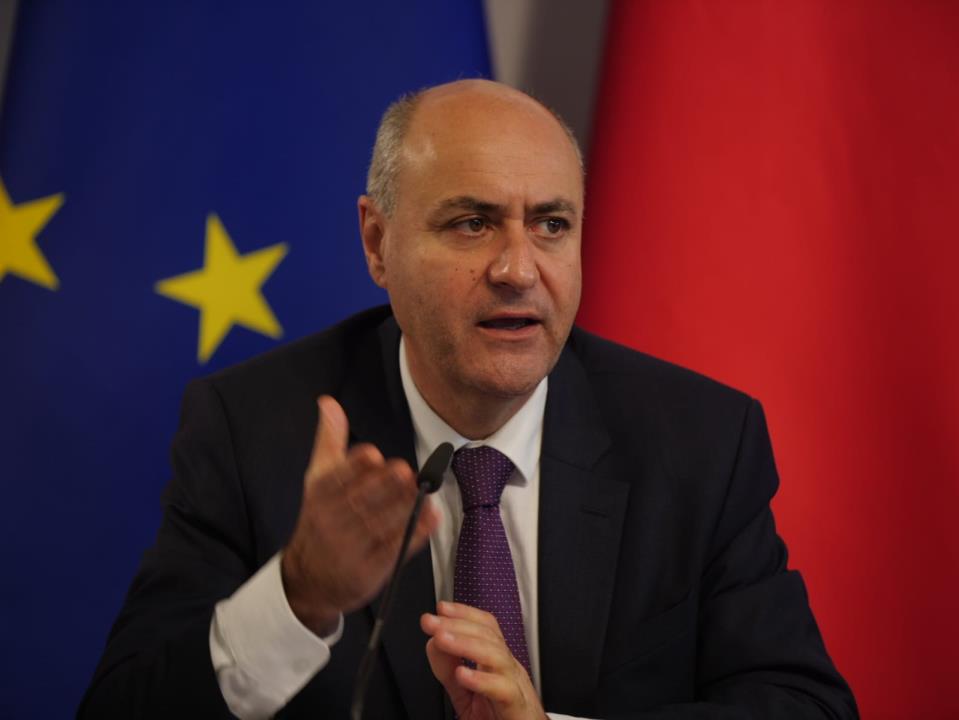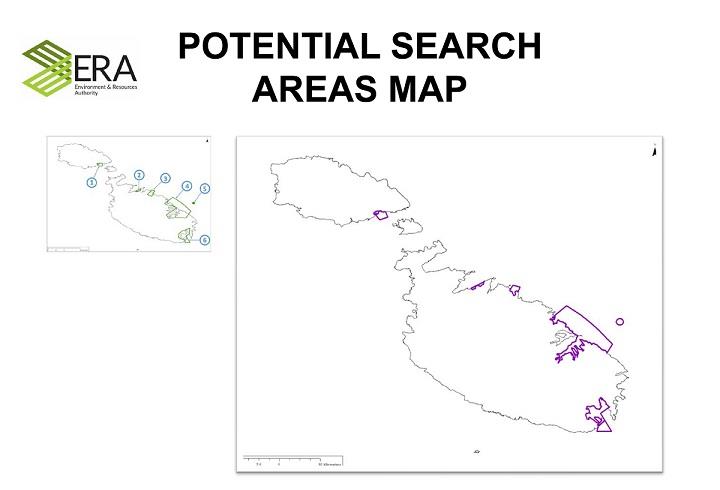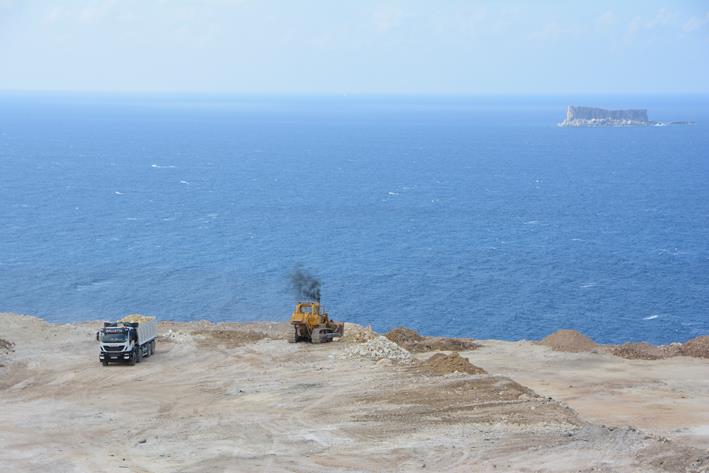Several millions of euro were spent on two live projects involving a topological survey of the sea to identify ideal sites for land reclamation, Environment Minister Jose Herrera told The Malta Independent.
The survey was done to determine where land reclamation can be done, where it cannot be done and where it would cause harm to the environment, he continued. The survey also identifies the extent to which land reclamation can be carried out.
Last Monday, Herrera told the press that a proposal detailing the ideal sites to be considered for land reclamation will be presented to Cabinet in the coming weeks.
Speaking about the survey, he said "I am lucky to have all this data. I will use this data, and based on this data I will go the government with my proposal of where this land reclamation could take place."
When asked why a new proposal was being presented to Cabinet, considering a leaked presentation by Environment and Resources Authority (ERA) identifying the ideal sites for land reclamation was already available and in circulation since last year, Herrera said that this had not been presented to Cabinet.
He continued to say that that report was a "works in progress" and "half-baked", leaked to the media by a member from ERA. "The report needed a lot of fine-tuning and the final version will be presented to me by the end of this week or next week." Subsequently, he said he will present it to Cabinet.
The document that will be presented to Cabinet is also drawn up by ERA and will also explain the various impacts of land reclamation.

Earlier this month, the Ministry had told this newsroom that the land reclamation policy is still in draft stage, despite the country currently being faced with yet another construction waste 'crisis'.
Land reclamation has also risen on the agenda in recent months because of the massive amount of waste set to be generated by the proposed Malta-Gozo tunnel. Prime Minister Joseph Muscat had noted that the solution for the waste generated from the tunnel could be land reclamation.
He had also said that Malta already has experience with land reclamation in the Marsa and Msida areas, as well as the Freeport. He had added that it does not mean that land reclamation will be used to build, but will be used in the 'best way possible'.
Muscat has also noted that all feasible options were being considered, but excluded the creation of artificial islands for them to be filled with skyscrapers.
For the medium term, dumping construction waste at sea could be a solution to the construction waste problem Malta is currently facing, the Prime Minister also noted just a few days ago.
"I must admit that this not my favourite option, especially since construction waste is a precious resource. But this can be a fall-back position," he continued, adding that in the long term ERA is conducting studies on land reclamation.
Following this, Herrera said that land reclamation is another potential solution for construction waste, noting that the Prime Minister had "hit the nail on the head" with his vision for what land reclamation should be.
He also said that the absolute priority for land reclamation should be the environment, even though it may still include certain minor economic aspects.

In the leaked presentation, six areas around Malta and Gozo were identified as potential areas for a land reclamation project.
In the same document, ERA had noted that given the several major projects being proposed and the related generation of construction waste, it had carried out an analysis of potential search areas for a land reclamation project. The assumed primary reason for the intended land reclamation is for the placement of inert material.
The six potential areas identified for land reclamation in the leaked document are Mġarr Harbour (Gozo), Buġibba and St Paul's Bay Waterfront, Qalet Marku, Portomaso to Xgħajra, the spoil ground area off Xgħajra and the Marsaxlokk harbour area.
The largest potential search area is the Portomaso to Xgħajra area, which is identified in the ERA presentation document as having a potential scale of medium to large. The area could be used as an investment for commercial and industrial/urban purposes as well as the creation of natural habitats, the ERA noted.
Concerns were raised following the release of the leaked document with Moviment Graffitti saying that the Xgħajra land reclamation project will have a devastating impact on nature and residents, while Xghajra Mayor Anthony Valvo had said he would wait for the conclusion and clarification of the ERA regarding potential land reclamation sites before taking any action.
"Don't tell me you are against land reclamation because you have a sea view that will be lost," Herrera had told a bewildered resident from Xgħajra, during a meeting of the parliamentary environment committee on construction waste in May.
Herrera had insisted land reclamation would enhance the country's open spaces. "It will be done for environmental purposes... we need to take a long-term view that benefits society."
In an interview with MaltaToday, the director of the ERA, Michelle Piccinino, had said the designation of coastal land between Portomaso and Xgħajra for 'large-scale' land reclamation is only 'indicative'.
The other areas along the coast were identified as potentially being micro, small or medium projects. The harbour areas, as well as Qalet Marku could potentially be used to enhance the potential of the area, giving examples of breakwaters, marinas and touristic developments.
The presentation notes that the reclaimed land could be used for any purpose, depending on the location selected; however, economic feasibility must be noted.
The presentation makes it clear that any areas described as a 'potentially suitable' should not be considered as 'definitely acceptable for the purposes of land reclamation'.

While noting that disposal at sea is regulated at an international level through various instruments, the ERA said that, in Malta, disposal at sea is only allowed at the spoil ground. Furthermore, they noted that all efforts must be undertaken to reduce the volume of such waste before land reclamation is considered.
The ERA said, in the presentation, that construction waste generation should be reduced at source and recovery must be maximised. Furthermore, if land reclamation is to be considered, it is to be limited and localised.
The document also notes that relevant international and national policy aspects regarding ecology and biodiversity must be abided to. Alteration of hydrographical conditions and influences on the hydromorphology of water bodies should be kept to a minimum.
As much as possible, habitats of the Habitats Directive Annex I should be avoided when considering land reclamation, the ERA noted.
Annex I lists 233 European natural habitat types, including 71 priority habitats (i.e. habitats in danger of disappearance and whose natural range mainly falls within the territory of the European Union).
The ERA highlighted the priority habitat of Posidonia as areas that should be avoided. Areas hosting seabird colonies and relatively pristine natural areas are noted as areas to be avoided.
Terrestrial areas without existing road infrastructure are also detailed as being areas to be avoided.
In 2013 the government launched an international expression of interest for potential land reclamation projects, receiving 21 proposals that were reviewed by an internal selection committee. Bidders for land reclamation ventures had to pay a €5,000 fee for the expression of interest and were bound by a confidentiality agreement.
Floating villages, a race track and business centres were among the proposals submitted to the government.